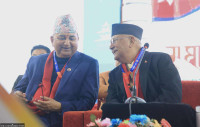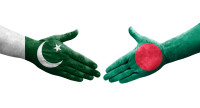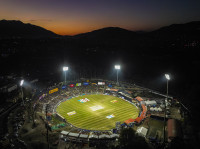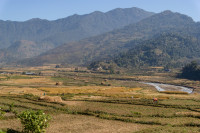Opinion
TRC will not look into the cases sub-judice at the court
The government set up the transitional justice mechanism eight years after the signing of CPA which envisioned the TRC to investigate into the cases of serious rights violation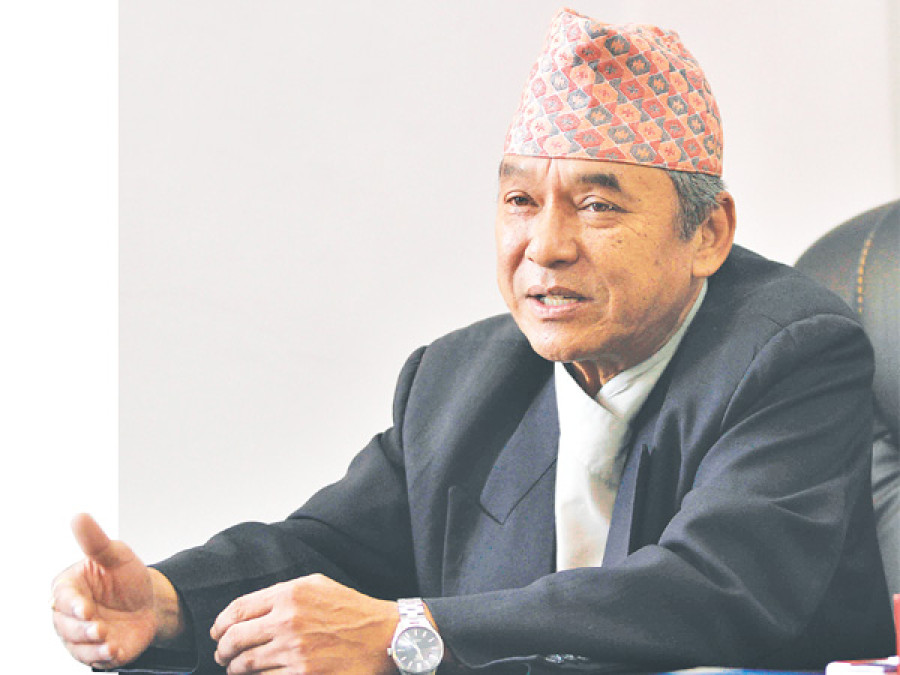
How is the transitional justice process moving along?
The quake briefly slowed down our work but we have resumed our activities after setting up a new office. In the aftermath of the quake, we visited several districts to find out the status of the conflict victims. The government, through the Ministry of Peace and Reconstruction, was involved in distributing relief to the conflict victims. Officials at the ministry briefed us that the victims were not very satisfied with the relief work. We visited several districts and met with local officials, civil society members, media and the conflict victims, in order to collect their views, reactions and suggestions for the future relief distribution. So far, we have visited 20 districts.
So what have been the findings so far?
The findings have been very insightful. Many injured conflict victims have not received proper treatment. Additionally, as it took a very long to establish the TRC, the health of the injured victims has further deteriorated. We need to address this problem as soon as possible. Another issue that we came across was with regards to the scholarship programme the government offers to the children of the conflict victims. The government’s scholarship programme provides free education to upto three children of the victims until they turn 18. This is creating conflict within the victims’ families as many of them have more than three children. We believe that the government should consider giving scholarship to these children even after they reach 18 years and up to the college level. For this, the government can make an arrangement with government colleges. Another issue that came up was the monetary compensation victims receive for the death or disappearance of family members. The government has announced Rs 1 million as compensation to the family of the deceased which is disbursed in instalments. The family members said that it would have been better if they were given a lump sum amount so that they can invest it. In addition, there have been cases of fake victims. The real victims complain that fake victims have been collecting relief in their names.
Do you have the actual data of the victims? How are they categorised?
The Ministry of Peace and Reconstruction, responsible for maintaining data, had recorded over 17,000 deaths in 2013 whereas this year, the number has dropped to 16,000. The Nepal Conflict Report 2012 submitted by the UN records 12,686 deaths. Meanwhile, according to NGOs working in human right issues the number of deaths during conflict lies in between 12,000 to 17,000. There is no uniformity. Therefore, we do have a problem regarding the correct figures of the conflict victims so far. But as the TRC is now responsible for finding the actual statistic, we are trying to get help from the concerned parties—the ex-rebels and the government —as well as other parties to find the accurate figure.
How much time will it take to get the accurate data?
This might take sometime as our office has not been able to function fully due to the earthquake. Once our office gets back to normal, we will approach the then rebels and the government for their data. We should be able to get the actual data in about three months.
So how cooperative have the major stakeholders been with the TRC?
We have already held meetings with eighteen political parties including the UCPN (Maoist) party, the ex-rebels. Additionally, we have also met the major stakeholders from the government including the Nepal Army, Nepal Police, and Nepal Armed police force. We have also met the prime minister, the home minister and the other concerned ministers as well. All the stakeholders have supported the TRC so far.
What about the issues regarding the jurisdiction of the commission?
The Supreme Court has clarified on the jurisdiction of the TRC and other quasi-judicial bodies. Only cases related to human right violations during the conflict will come under the TRC whereas other violation of laws will be handled by judicial mechanisms. So the cases that have already been registered at the court are not to be brought under the TRC—we will not look into the cases sub-judice at the court. However, the cases filed at semi-judicial bodies such as the National Human Rights Commission (NHRC), the police, local administrations and other bodies, which have not been filed in a court as yet, should be brought under the TRC. For instance, there are a few cases with the Ministry of Peace and Reconstruction which will be forwarded to the TRC.
As the NHRC holds most of the evidences of violations during the war—the recordings or statements given by witnesses and others—how is the TRC coordinating with it?
We have been in contact with the NHRC ever since the establishment of the TRC. They not only have evidence of the conflict cases but also have the expertise, experience, and human resource to investigate into the conflict-era cases. The NHRC has provided us with excellent support and we are certain that it will continue to do so.
Some Madhesi parties are demanding that the TRC should broaden its jurisdiction and also look into cases of human right violations committed during the Madhes Aandolan.
Currently, we only have the mandate given to look into conflict-era cases which occurred in between 1996 to 2006. The Madhes Aandolan took place in 2007. We are bound to work under the mandate given by the Comprehensive Peace Agreement and the Interim Constitution. Madhesi leaders have also expressed their dissatisfaction with us during consultations and requested us to look into the cases of Madhes Aandolan. However, other major political parties did not agree to it.
The TRC is dealing with issues that might be sensitive to major stakeholders in the country. In particular, what are the concerns of those parties directly linked with the conflict?
They have been stating that the human rights violations that occurred during the armed conflict should only be dealt by the TRC and not by a regular justice mechanism. They have appealed for a revision of the TRC Act at the Supreme Court.
But if the major stakeholders like the Army and other non-state actors are not satisfied with this process, would it not invite more conflict?
That is why it is our responsibility is to address the concerns of all the stakeholders in a judicially, politically and socially fair manner to achieve sustainable peace in the country. This commission cannot move forward by just addressing the issues of one stakeholder. There is a reason why transitional justice mechanism is required in Nepal. So I request all the concerned people to understand that.
So what next for the TRC?
First, the objective is to give the peace process a logical conclusion. Second, Nepal, as a sovereign country, has committed to many international treaties and conventions on human rights and humanitarian laws. Thus, through the TRC, Nepal has an opportunity to prove to the international community that it respects and is committed to international human rights, not only in words but also in action. Lastly, as it took so much time for the TRC to be established, the victims have many grievances. They feel neglected by the state and some even think that the TRC is nothing but a show. However, as the TRC was mentioned in the government’s programmes and policies as well as in the budget, it shows that the government is committed to the TRC process.
As victims lie at the heart of conflict resolution, how does the TRC plan to give justice to them?
The first issue is that of identity. The victims want identity cards. But there is no agreement even among the victims as to what the identity card should include, for instance, the kind of concessions they will be entitled to. So, we are currently holding consultations with the victims in various districts. After the victims have been identified, we need to classify them under different categories as they face different problems. The victims’ situation should be re-evaluated. For instance, the health condition of the injured after the conflict could have either improved or deteriorated. So, it will not be fair to stick to the old evaluation.
How has the new constitution included the issue of transitional justice?
The draft constitution has not clearly mentioned the transitional justice mechanism. And though we have not made any formal recommendation to the Constituent Assembly, we have advised them to clearly state the roles of the commission during meetings.
Any legal provisions that would facilitate the work of the TRC?
As of now, torture is categorised as a serious crime but the offence has not yet been criminalised. We have repeatedly asked the government to bring a law related to it immediately. Further, the statute of limitation on rape which is 35 days for reporting the crime is problematic because the commission itself was formed eight years after the conflict.
Lastly, what are the concerns of the international community regarding human rights and humanitarian laws in post-conflict society?
In a civilised society, bilateral relations are based on the foundation of human rights. Bilateral relationships are not established with countries that are not sensitive enough to protect human rights. What I have found is that the international community wants Nepal to fulfil its commitment to conventions and laws it is signatory to.




 13.12°C Kathmandu
13.12°C Kathmandu